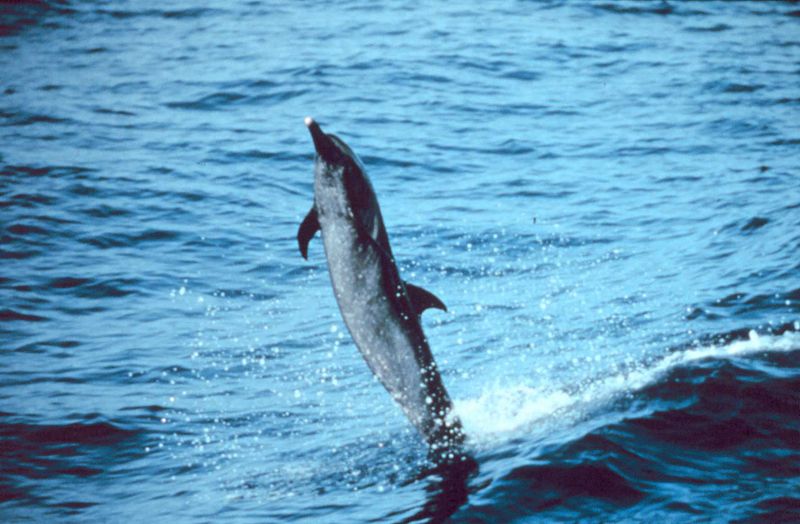
Pantropical spotted dolphin, a common victim of bycatch
Bycatch is the term used to describe animals caught in fishing nets that weren’t the target, but ended up being captured anyway. A real bummer. This issue really hit the scene in the 1980s when “dolphin-safe” canned tuna became part of the public’s consciousness, thanks to an excellent education campaign.
According to the Encyclopedia of Marine Mammals: “Tuna boat skippers learned in the 1950s that they could catch large tuna by herding dolphin schools with speedboats and then surrounding them with long, deep, purse seine nets. Fishermen were exploiting the curious fact that in the eastern tropical Pacific Ocean and some other places, yellowfin tuna Thunnus albacares will school under and follow dolphins schools.”
Once all the dolphins and tuna were rounded up, the net was “pursed,” meaning the bottom section is closed off to catch the tuna. Meanwhile, the dolphins are still trapped, but can still surface to breath and jump out of the net’s open area at the ocean’s surface. Many trapped dolphins find this to be a tough situation to think clearly. Which isn’t surprising, with a net closing in on you, other dolphins bumping against you and fish going crazy underneath you, no wonder many dolphins end up dying despite the option to jump out.
The estimated number of dolphins that died from this fishing technique is astonishing. The encyclopedia article on bycatch authored by Simon Northridge states: “During much of the 1960s and up to 1972, annual mortalities are thought to have ranged between 200,000 to 500,000.” Unbelievable, a possible half-million dolphins killed so we can eat tuna. What a waste.
Thanks to the dolphin-safe tuna campaign, “dolphin mortality had been reduced to less than 1,500 animals per year by 2004.” But unfortunately, the pantropical spotted dolphins and others are having a tough time recovering. Because you see, fishermen still use the dolphins to catch the tuna, they’ve just gotten a lot better at making sure not as many die. And of course this is a good thing (but somewhat annoying at the same time because it means they could have been doing it all along). But going through a constant cycle of being chased, thinking death approaches, only to be released back to the ocean, can’t exactly be a peaceful way to live.
Unfortunately, bycatch is a result of a variety of fishing practices all over the world and “one estimate of global bycatch levels suggests that over 300,000 marine mammals per year are killed in fishing operations globally.” Yikes! That’s a lot of marine mammals dying for no good reason, except so we can eat fish.
New technology in the form of pingers has proven helpful. These devices produce short, high-pitched noises that marine mammals can detect, but fish do not. Thus far, pingers have reduced bycatch. But since they are expensive, it’s not clear if fishermen will use them unless required to do so. And alas, all this is a little too late for the Baiji (AKA Yangtze river dolphin), now considered to be extinct thanks to destructive fishing practices. RIP.
It’s posts like this that keep me coming back and checking this site regularly, thanks for the info!